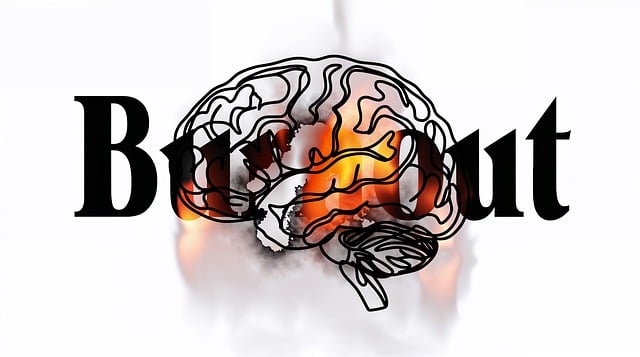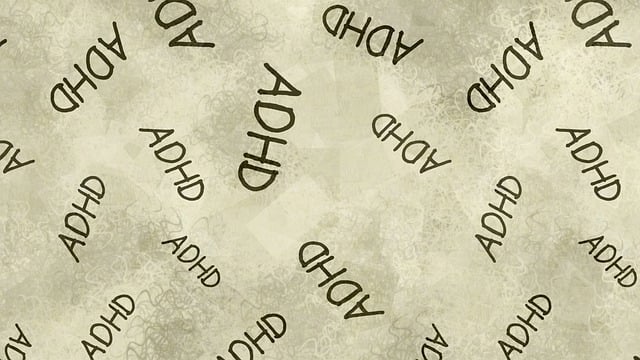Community Outreach Programs, focusing on Parker Workplace Issues and Job Stress Therapy, play a vital role in connecting local communities with essential services. These programs bridge the gap between service providers and individuals facing challenges by offering support, resources, and guidance through workshops, sessions, and counseling. Benefits include emotional intelligence development, crisis intervention, and stress management, leading to improved mental health and resilience among participants. Tailored positive thinking strategies and cultural sensitivity are key to their effectiveness. Implementing these programs requires careful planning, engaging community partners, and innovative methods like a Mental Wellness Podcast Series. Success is measured through clear evaluation metrics, data analysis, and adaptive planning, ensuring continuous improvement and a robust safety net for clients and practitioners.
Community outreach programs play a pivotal role in addressing workplace issues, particularly job-related stress. This article delves into the multifaceted benefits and goals of such initiatives, with a focus on Parker’s unique challenges. We explore strategies to design effective outreach, outline implementation steps, and emphasize best practices. Additionally, we discuss how to measure success and continuously improve these outreach initiatives, all while providing much-needed job stress therapy for Parker’s workforce.
- Understanding Community Outreach Programs: Benefits and Goals
- Identifying Parker's Workplace Issues and Stressors
- Designing Effective Outreach Strategies for Job Stress Therapy
- Implementing the Program: Steps and Best Practices
- Measuring Success and Continuous Improvement in Outreach Initiatives
Understanding Community Outreach Programs: Benefits and Goals

Community Outreach Programs play a pivotal role in fostering connection and addressing diverse needs within local communities. These initiatives aim to bridge the gap between service providers and individuals who may face various challenges, including Parker Workplace Issues and Job Stress Therapy. By implementing such programs, organizations can offer much-needed support, resources, and guidance.
The benefits are multifaceted; they enhance community well-being by promoting emotional intelligence and providing crisis intervention strategies. These programs often serve as a safety net, ensuring that individuals struggling with stress management receive the care they require. Through interactive workshops, educational sessions, and one-on-one counseling, participants gain valuable tools for navigating personal and professional stressors, ultimately improving their overall mental health and resilience.
Identifying Parker's Workplace Issues and Stressors

In implementing community outreach programs focused on Parker’s Workplace Issues and Job Stress Therapy, it’s crucial to understand the unique challenges that Parker’s workforce faces. Modern workplaces are often fast-paced, demanding, and highly competitive, leading to heightened stress levels among employees. Factors such as heavy workloads, unrealistic deadlines, and a lack of work-life balance can contribute to significant job-related stress. Furthermore, trauma support services become essential in addressing the growing need for mental healthcare within Parker’s community, especially considering the potential impact of unaddressed trauma on overall well-being.
Cultural sensitivity in mental healthcare practice is another critical aspect that should be integrated into these outreach programs. Recognizing and respecting diverse cultural backgrounds and beliefs can foster a more inclusive environment, encouraging individuals to openly discuss their stress and seek help without barriers. Promoting positive thinking and coping strategies tailored to Parker’s demographic can significantly enhance the effectiveness of these initiatives, ultimately leading to happier, healthier, and more productive communities.
Designing Effective Outreach Strategies for Job Stress Therapy

Designing effective outreach strategies for job stress therapy involves understanding the unique challenges faced by employees in today’s fast-paced work environments. The Parker Workplace Issues and Job Stress Therapy program recognizes that mental health awareness is crucial for fostering a healthy, productive workforce. By integrating evidence-based practices and tailored interventions, organizations can address workplace issues proactively. This includes promoting emotional healing processes through accessible resources and support systems that cater to diverse employee needs.
Healthcare provider cultural competency training plays a vital role in this initiative. Equipping professionals with the skills to navigate different cultural perspectives ensures sensitive and effective delivery of job stress therapy services. Tailoring these programs to align with organizational culture and values, while incorporating best practices from Mental Health Awareness initiatives, can create a supportive environment where employees feel comfortable seeking assistance for their emotional well-being.
Implementing the Program: Steps and Best Practices

Implementing a community outreach program like Parker Workplace Issues and Job Stress Therapy requires careful planning and strategic execution. The first step is to identify the specific needs and challenges faced by your target community, whether it’s a particular neighborhood, workplace, or demographic group. This involves conducting surveys, focusing on local leaders, and listening to feedback from potential participants. Once identified, tailor the program to address these issues, ensuring its relevance and appeal.
Best practices include engaging with community partners who can help with outreach, such as local businesses, schools, or non-profit organizations. Leveraging existing networks expands your reach and builds trust. Additionally, consider using innovative methods like a Mental Wellness Podcast Series Production to share insights on stress management and compassion cultivation practices, making the program accessible to a wider audience. Regular evaluation is crucial; measure the program’s impact through feedback mechanisms and adjust as needed to ensure continuous improvement and relevance.
Measuring Success and Continuous Improvement in Outreach Initiatives

Measuring the success of community outreach programs is vital to ensure their long-term impact and effectiveness. When implementing initiatives like Parker Workplace Issues and Job Stress Therapy, it’s essential to establish clear evaluation metrics. These could include the number of individuals reached, engagement levels during workshops or sessions, and subsequent improvements in mental health outcomes. For instance, tracking pre and post-program surveys can reveal changes in stress levels, job satisfaction, and overall well-being.
Continuous improvement is fostered through regular data analysis and adaptive planning. Using tools like Crisis Intervention Guidance and Burnout Prevention strategies, organizations can identify areas for enhancement. For example, if attendance at workshops drops, a re-evaluation of marketing approaches or the integration of new topics might be necessary. Moreover, Risk Management Planning for Mental Health Professionals can guide the implementation of robust safety nets, ensuring that both clients and practitioners are supported throughout the outreach process.
Community outreach programs focused on addressing Parker’s workplace issues and job stress therapy can significantly enhance employee well-being. By implementing strategic initiatives, organizations can create a supportive environment, foster open communication, and ultimately improve overall productivity. Through effective planning, tailored strategies, and continuous evaluation, these programs become powerful tools for managing workplace stress. This holistic approach not only benefits individuals but also contributes to a healthier, more engaged workforce.














